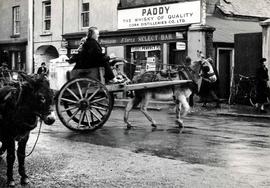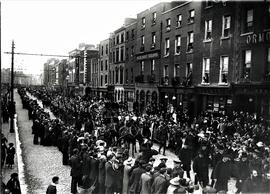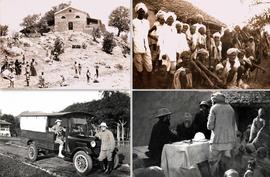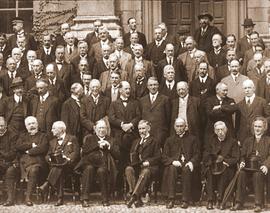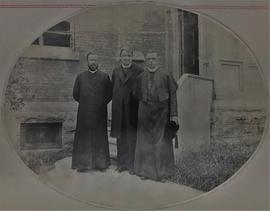A file of letters to Fr. Senan Moynihan OFM Cap. The file contains personal letters and correspondence relating to the Capuchin Publications Office. Includes letters from D.L. Kelleher, Alison King (Vico Terrace, Dalkey, County Dublin), Joseph A. McCarthy (6 Trafalgar Terrace, Monkstown, County Dublin), Fr. John Bosco Lennon OFM Cap., Ethel Mannin, Sister Mary de Pazzi (Rosemount, Booterstown, County Dublin), Pat Lawlor (Wellington, New Zealand, enclosing a photograph of Michael A. Bowles), Margaret Mary Pearse, Michael J. Kennedy (‘Manresa’, Trimlestown Park, Booterstown, Dublin), Fr. Francis Regis (Bishop’s House, Kumbakonam, India), Bishop Fulton J. Sheen, Pádraig De Brún, Séamus Campbell, Fr. Thomas McLaughlin OSB (Fort Augustus Abbey, Inverness, Scotland), Máirín Cregan (Kindlestown House, Delgany, County Wicklow), Peter F. Anson, Ernest Keegan, Fr. Hugh Morely OFM Cap., Archbishop Gerald O’Hara (Apostolic Nuncio to Ireland), Fr. Terence L. Connolly SJ, John Alvin Feltis, Doran Hurley, Adolf Morath (photographer), John Hennig (Walmer, Sutton, County Dublin), Sister M. Catherine (Missionary Sisters of Our Lady of the Holy Rosary, Killeshandra, County Cavan), Seán T. O’Kelly (President of Ireland), Thomas MacGreevy, Nuala Moran (‘The Leader’), Fr. J. O’Connell (St. Columban’s Seminary, Essendon, Victoria, Australia), Tomás Ó Con Cheanainn, Alan C. Macauley (Sierra Madre, California), Sister Gabriel (Maryknoll Sisters, Wailuku, Maui, Hawaii), Seumas O’Brien (sculptor, dramatist, fabulist, 1880-1959), Michael A. Bowles, Donald Attwater (Saint Ives, Cornwall), Alfred White (15 Serpentine Avenue, Ballsbridge, Dublin), Chester Beatty Library, Sister M. Conception (Presentation Convent, Doneraile, County Cork), Elisabeth Dubreuil-Chambardel, Fr. Jerome Hawes TOSF (Mount Alvernia Hermitage, Cat Island, Bahamas), Maire Ó Brolcháin (Lenaboy Park, Galway), Nancy Leonard (Carrollstown, Trim, County Meath), Leonard J. Schweitzer, Jack B. Yeats, Fr. Jack Hanlon, Sister Bernarda (St. Antony’s Convent, Pavaratty, India), Fr. Colman O’Neill OP, An tAthair Micheál Ó Sé OFM Cap. (Fr. Michael O’Shea), Archbishop John Colburn Garner, Sister M. Liguori (Booterstown, County Dublin), Sister Imelda Cassidy (Loreto College, 43 North Great George’s Street, Dublin), Winefride Nolan (Aughrim, County Wicklow), and Major A.F. Joslin (Headquarters, British Army of the Rhine, Germany).

